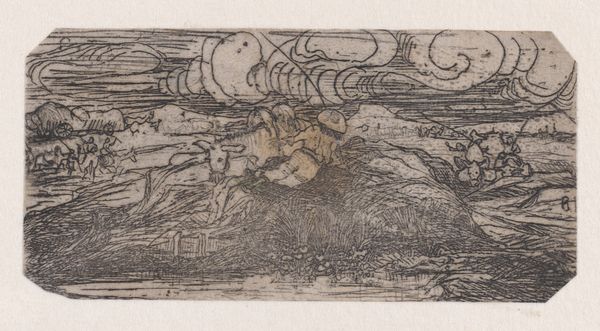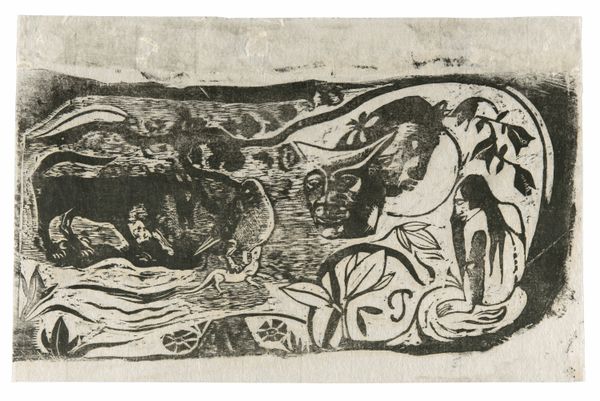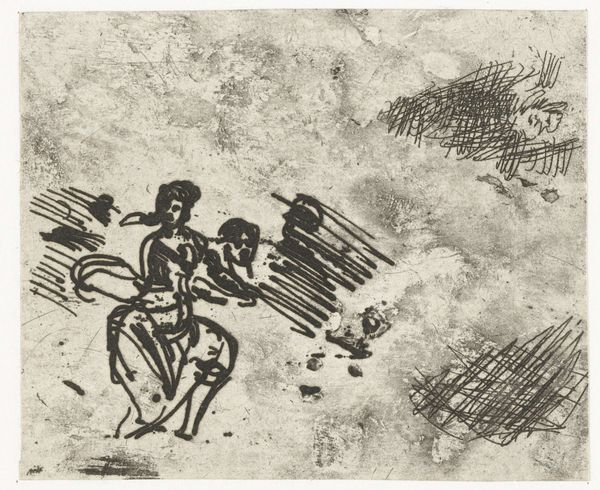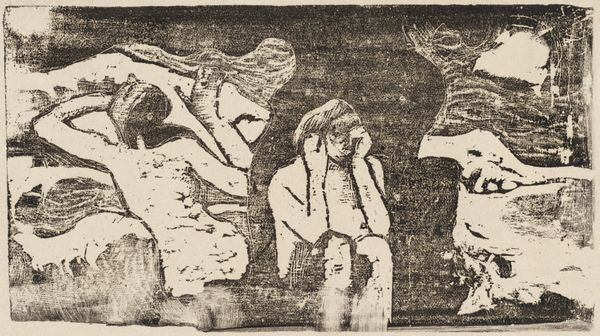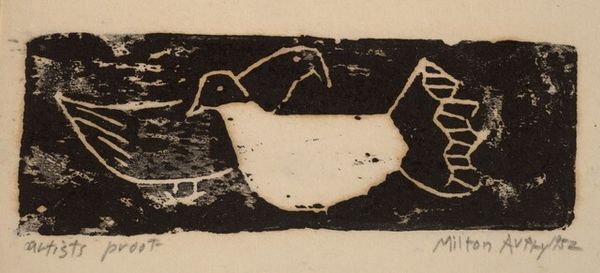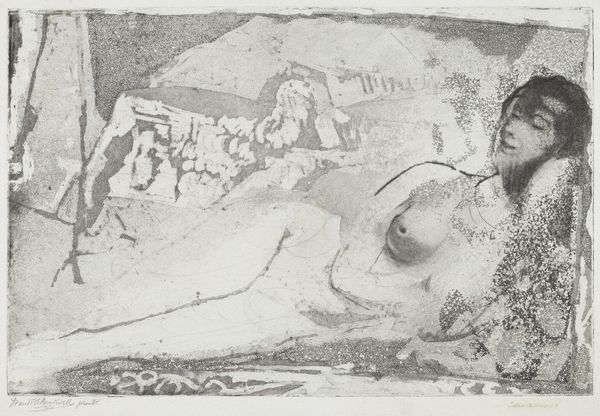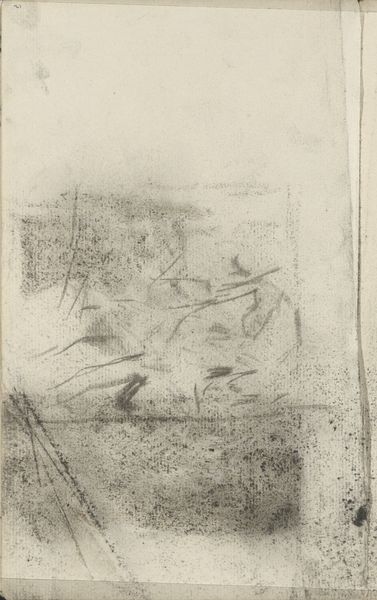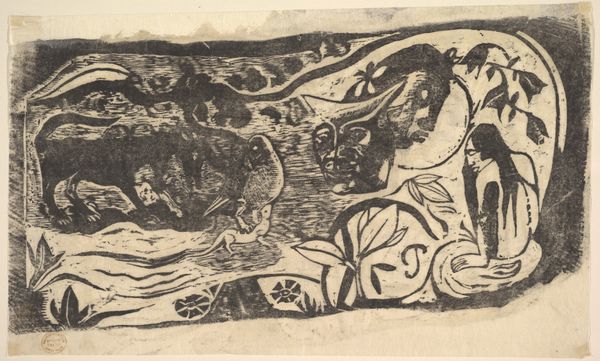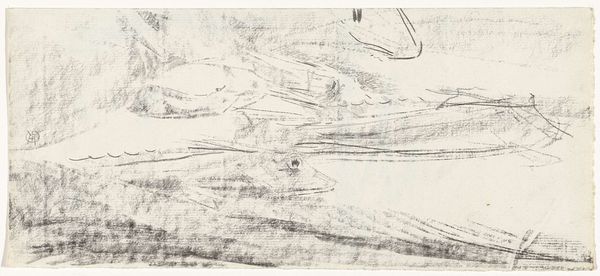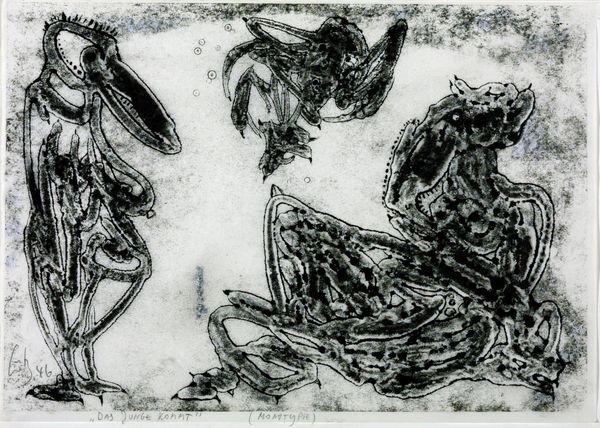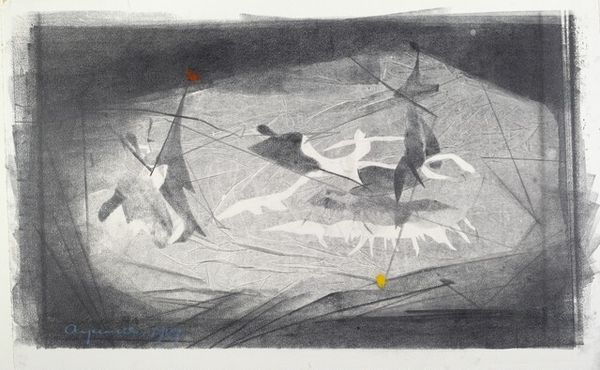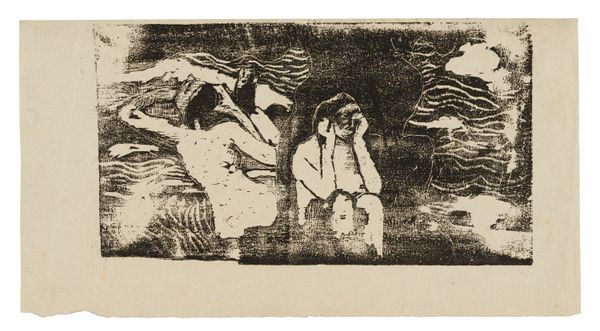
print, graphite
#
abstract-expressionism
# print
#
landscape
#
abstraction
#
graphite
Dimensions: overall: 41.9 x 66 cm (16 1/2 x 26 in.)
Copyright: National Gallery of Art: CC0 1.0
Editor: Here we have Adja Yunkers' "Desert," a 1949 graphite print. It's almost entirely in grayscale, a complex layering of tones that gives the impression of… fossilization, maybe? All these intertwined forms create an image that reads almost like a buried memory. What jumps out at you? Curator: Notice the artist's strategic application of graphite, resulting in varied textures and tonal ranges. See how Yunkers articulates form not through explicit outlines, but through contrasts in value. The interplay between light and shadow creates spatial ambiguities that both reveal and conceal, inviting closer inspection of compositional balance and the use of positive and negative space to engage with our perception. Observe the textured layering of shapes against stark geometric interventions that invite both visual interest and interpretation. Is the single spot of red in this grayscale field an intentional disruption, perhaps drawing the eye towards a deeper level of symbolic resonance, or is it strictly a formal compositional tactic? Editor: The interruption makes the composition very active, setting up different spatial relationships with that single spot of red. The layering does make it feel as though one element informs another… but why the desert? Curator: What if the ‘desert’ of the title refers not to a literal landscape but to the sparseness, a reduction of form to its essential components? Consider, too, the formal qualities, the textural interplay and stark lines which constitute the artist’s expressive vocabulary. Doesn’t the stark monochrome palette intensify this sense of reduction, compelling us to appreciate the intrinsic qualities of line and form? Editor: I see. By emphasizing the visual elements, he prompts us to deconstruct the image and reconstruct it, unearthing the ‘desert’s’ deeper compositional intent. It definitely challenges the viewer to look beyond the immediate impression. Curator: Precisely, and it allows us to look at all landscapes—and abstractions—with greater discernment of fundamental forms and relationships.
Comments
No comments
Be the first to comment and join the conversation on the ultimate creative platform.
